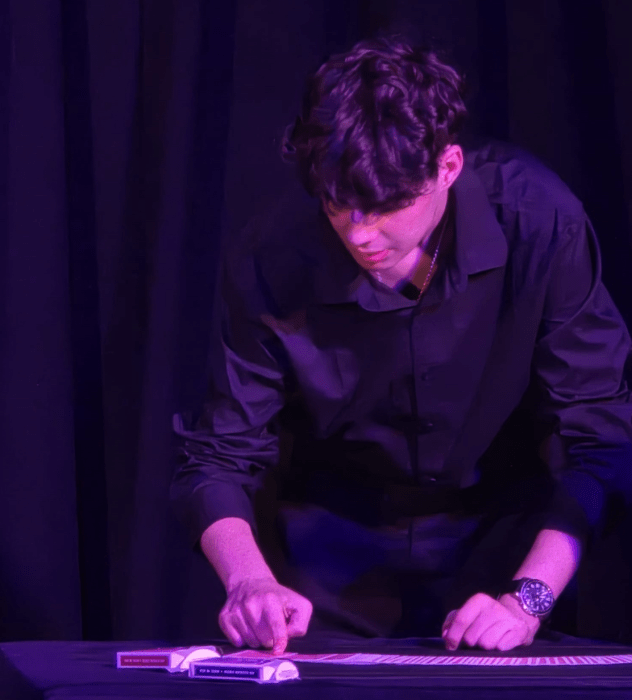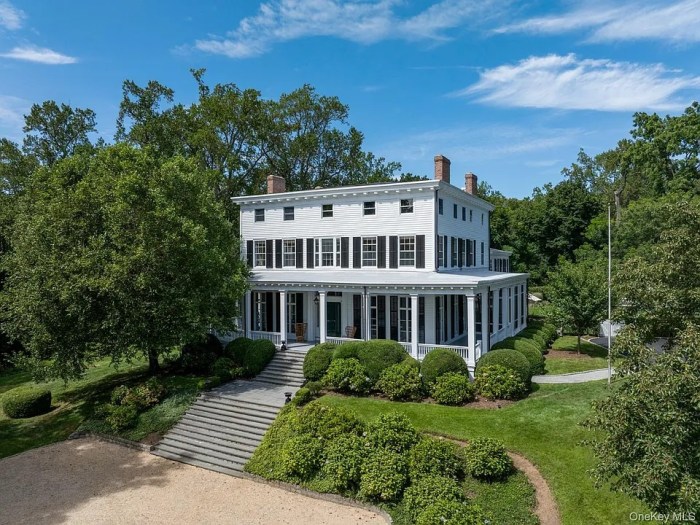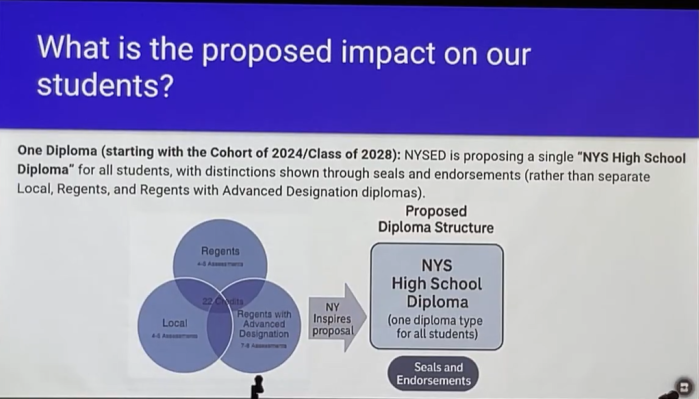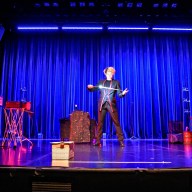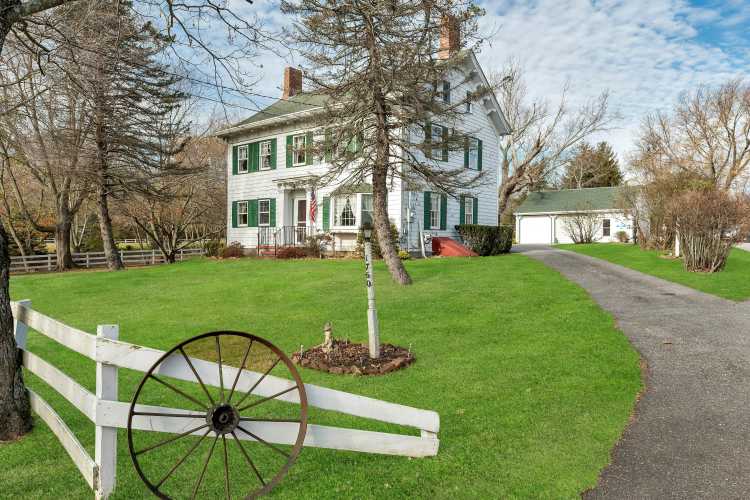Robert R. McMillan Presents ‘Theodore Roosevelt, Panama and the Panama Canal’, an Insider’s View
The Friends of Sagamore Hill opened the 6th Annual Dr. John A. Gable Lecture Series on Tuesday March 23 with a lecture by author Henry Osmers. Mr. Osmer said it was the egalitarian persona of TR the family man and leader of men that most appealed to him. That was the direction of his talk as he illuminated TR at Camp Wikoff, of Montauk, Long Island.
Gerard Alfani, lecture organizer, and Friends of Sagamore Hill chairman introduced the speaker. Mr. Osmer, teaches at Dowling College and is the official historian for the Montauk Lighthouse. He has written three books, They Were All Strangers, the story of the wreck of the John Milton at Montauk; Living on the Edge, about the Montauk Lighthouse; and On Eagle’s Beak, a history of the Montauk Point Lighthouse.
Mr. Osmers topic was TR and Camp Wikoff, the camp established in Montauk in 1898 for troops returning from the Spanish-American War. Mr. Osmers said he was most interested in TR the man, husband and father. He said, “The way his men were so devoted to him came out in the research I did.” He gave the history of war which began in 1898. TR was the Assistant Secretary of the Navy and was head of the cavalry regiment the Rough Riders. TR brought the Rough Riders to Cuba and after the capture of Santiago de Cuba, the capital, TR wanted to get his men away from the dangers posed by the tropical diseases they were faced with. The army concerned about bringing infectious diseases back to the mainland, were not acting fast enough for TR.
On July 23, TR wrote a letter to Gen. William Shafter of the Fifth Army Corps, signed by seven majors and brigadier generals – a breach of Army etiquette, saying that the men should be sent home or all of them would die uselessly. The letter ended up in the press, where President McKinley read the report. He gave the orders to do what TR wanted – send them to a place of recovery, which turned out to be a place that TR knew was remote enough, Montauk, Long Island.
Camp Wikoff
There were already a few inns there called 2nd and 3rd House. Camp Wikoff, was named for Col. Charles Augustus. Wikoff of the 22nd U.S. Infantry who was killed at age 61, in the San Juan Heights assaults, and was constructed on 5,000 acres of land. Camp Wikoff which was used to quarantine 29,000 soldiers including TR and the Rough Riders to prevent the spread of yellow fever and other tropical diseases.
Mr. Osmers said Camp Wikoff was created from the ground up by putting in wells, roads and a makeshift hospital. At first there were no tents, and men slept on the ground wrapped in blankets. When the first 600 troops arrived, 300 men were at work laying the tracks for the railroad and the new road beds. A water tank was being built. A comissary, stables and tents went up. The men who had yellow fever were quarantined with double guards and kept a safe distance away from the others, he said.
When TR arrived he said, “I’m feeling disgracefully well. Oh, we had a bully fight.” Mr. Roosevelt spoke from the crowded deck of the transport Miami to the jubilant troops and civilians on shore as the ship approached the pier at Fort Pond Bay, which was their port location.
Mr. Osmers quoted General Wheeler saying of TR that he had absolute integrity, and was to be depended on always. The local press reported the camp was not in good shape and President McKinley visited there and said “It was a beautifully run, handsome camp.” Mr. Osmers said the East Hampton Star reported that McKinley was steered as where to go in the camp so that he only saw what was working well.
The women of East Hampton got involved and opened an auxiliary camp store.
TR Body Surfing
Mr. Osmers told a story that he felt typified TR. He said TR was out with a Private Gordan Johnston at the breakers by the sea. TR declared it “Bully!” and said, “I think I shall go in.” The private held his horse. TR stripped and said to the private, “As soon as I come out I shall hold the horse and you shall go in.” The water was inviting but TR as usual was not following military protocol. When TR was finished challenging the waves he said, “Johnston, now its your turn.” To do so for an officer with a private was unheard of, said Mr. Osmers. The young man did as he was told and he went on to become a Lt. Col. and received the Congressional Medal of Honor and the Distinguished Service Cross, said Mr. .Osmers
As TR was leaving Camp Wikoff, he said to his men, “I hope that at our 20-year reunion you all will have prospered. I feel love and attachment to each and every one of you that only death can break the tie.”
The Rough Riders presented TR with a Frederic Remington Bronco Busting bronze statue.
Mr. Osmers said TR loved the Rough Riders because they were men from every walk of life, every occupation and every social strata. When TR was mustered out from Camp Wikoff, he gave his name, rank and length of servie and a list of his duties, just like every other soldier.
He returned by railroad to Sagamore Hill to rest.
Just the Memories
Today, there is nothing left of Camp Wikoff, it was after all a tent city. The area is now called Theodore Roosevelt County Park. Mr. Osmer said the land had been used for cattle grazing from the 1660s to 1920s. Cattle and sheep spent their time there from spring to winter. It was a wide open prarie land with no trees in sight.
One change is that where the troops landed at Fort Pond Bay, an original fishing village was destroyed during WWII when it was used as a Navy shooting range.
TR never received the congressional Medal of Honor for his deeds in the Spanish-American War, although he was recommended for it. Secretary of War Alger refused to endorse it. Without his support, the effort failed, a great disappointment to the future president. That was turned around many years later when he would be awarded the Medal of Honor over 80 years after his death by President William Clinton.
Theodore Roosevelt County Park (formerly Montauk County Park) is located approximately 3 miles east of Montauk, New York. The park is 1,157 acres in size, running from Montauk Highway north to Block Island Sound and is bordered on the east by Montauk Point State Park. Montauk County Park was created from 1971 to 1986 through a series of land acquisitions by Suffolk County and was renamed for Theodore Roosevelt in 1998 to commemorate the centennial anniversary of his return to Long Island following the Spanish-American War.
Lecture Series Continues
The John Gable lecture series is free to the public and offers the opportunity to both hear and speak with experts on subjects and people related to the 26th President, Theodore Roosevelt, and Oyster Bay history.
The third and last lecture of the 2010 series takes place on Tuesday, May 25. Robert R. McMillan, author, T.V. host and former chairman of the Panama Canal Commission will present “Theodore Roosevelt, Panama and the Panama Canal, discussing an insider’s look at the history (including the construction of the canal under Theodore Roosevelt), and the future of Panama and the Panama Canal.
Doors open at 7 pm and the programs begin at 7:15 at the Christ Church Parish Hall located at 61 East Main Street, in Oyster Bay Hamlet. Following the lecture and brief discussion, light refreshments will be served and the public can meet with the speakers in an informal setting.
FYI: The Friends of Sagamore Hill is a non-profit educational and service organization that supports the Sagamore Hill National Historic Site in Oyster Bay; and is also a Chapter of the Theodore Roosevelt Association. This lecture series is given annually in memory of the late Dr. John Gable, past TRA executive director, who was renowned as the world’s foremost authority on Theodore Roosevelt. Dr. Gable’s work brought a better understanding of TR to the world, appreciation to Sagamore Hill NHS, and recognition to Oyster Bay.
For additional information: consult The Friends of Sagamore Hill website at www.sagamore-hill.com
Organization Profile
The Friends of Sagamore Hill either host or participate in many of the activities at the site, which are designed to keep alive the spirit of Theodore Roosevelt. An objective of the organization is to explore and develop meaningful ways to work with the National Park Service to serve the visitors to the site, while preserving the integrity of our American heritage. Also included is dual membership in the prestigious Theodore Roosevelt Association (TRA). The Friends of Sagamore Hill operates as a Chapter of the TRA, with the preservation of Sagamore Hill National Historic Site as its primary purpose. While joining has many advantages, the best is the satisfaction you will receive knowing that you are helping preserve a part of America’s great history for your children and grandchildren.
On the eve of his unexpected death, Theodore Roosevelt told his wife, “I wonder if you will ever know how I love Sagamore Hill.”
Generations later, visitors to Sagamore Hill National Historic Site continue to “fall in love” with his home.




